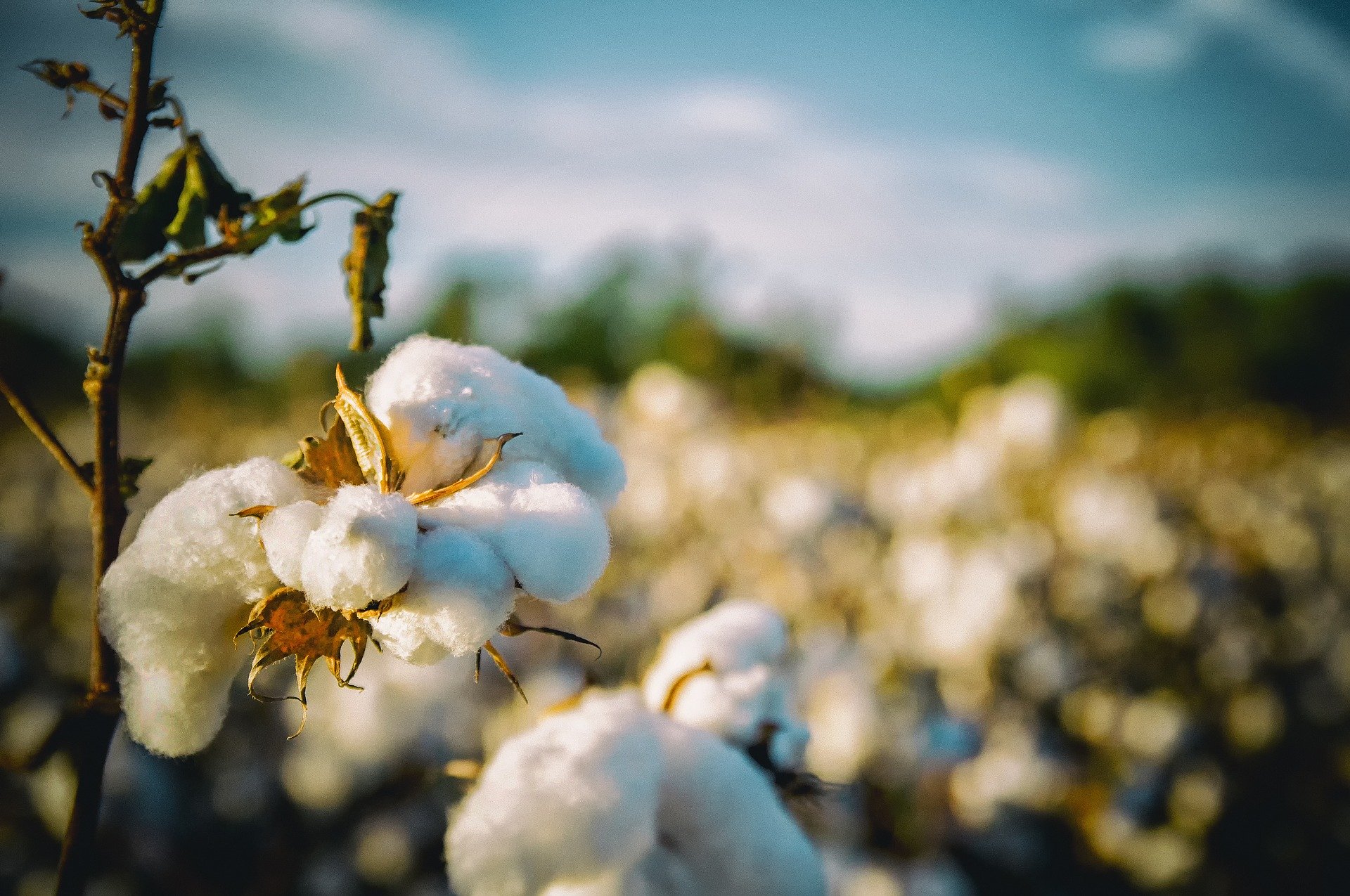How is the cotton plant turned into clothes?

Cotton is one of the world’s most versatile crops as its soft fibres can be made into a wide range of useful products. It grows in the dry regions of the tropics and sub-tropics of Africa, Asia, Australia and America and is used all over the world to make clothing, home furnishings and many more items we use every day. Its usefulness has been known about for thousands of years; there is evidence that people in Asia and South America began growing cotton crops as far back as 3000 BCE.
The natural, fluffy fibres of the cotton plant are not all that strong on their own, so they must go through several stages to become tough cotton fabric. First, the cotton plant needs to be harvested, which used to be done by hand but is now made much quicker and easier by machines. Stripper harvesters use rollers or mechanical brushes to remove the entire head, called the boll, from the plant, while spindle pickers use revolving barbed spindles to pull the fibre from the boll.
Next, the individual cotton fibres must be separated from the seeds of the plant and spun into strong yarn that can be woven or knitted into fabric. Cotton fabric is particularly practical for producing clothes as it is durable, easily washable and comfortable to wear because it absorbs and releases moisture quickly.
From field to fabric
The steps to producing your cotton T-shirt
1. Harvesting
The fibres inside cotton bolls are stripped from the plant by mechanical harvesters.
2. Ginning
Once harvested, the cotton is dried out and then the fibre is separated from the seeds using a cotton gin.
3. Fibre bales
The cotton fibre is compressed into bales weighing approximately 225kg each before being delivered to a textile mill.
4. Spinning
Individual strands of cotton fibre, called slivers, are twisted tightly together to create a thicker cotton yarn.
5. Weaving or knitting
The yarn is woven by interlacing strands on a loom or knitted by interlocking looped strands using needles.
6. Dyeing
The fabric is passed through a hot dye solution then squeezed through rollers to remove any excess liquid.
7. Cutting and sewing
Pieces of finished fabric are cut and stitched together to create clothing and other textile products.
8. Ready for the customer
The finished products are ready to be sold to retailers and purchased by the public.
This article was originally published in How It Works issue 112, written by Jo Stass
For more science and technology articles, pick up the latest copy of How It Works from all good retailers or from our website now. If you have a tablet or smartphone, you can also download the digital version onto your iOS or Android device. To make sure you never miss an issue of How It Works magazine, subscribe today!





